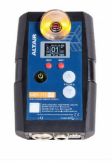
Beyond the Cable: A School's Guide to Choosing the Best Wireless Microphones
Wireless microphones are no longer a luxury—they are a necessity in a busy school environment. From the loud cheers of Sports Day to the quiet focus of a classroom lesson, a reliable wireless system is essential for clear communication and engaging presentations.
However, a one-size-fits-all approach won't work for a school's varied needs. You need a fleet of microphones that can handle everything: daily assemblies, theatrical performances, teacher's headset in classrooms, and outdoor events.
Here is your comprehensive guide to selecting the best wireless microphones for every corner of your school, balancing performance, durability, and budget.
1. Understanding Your School's Wireless Needs
2. Crucial Technical and Practical Considerations
Before you buy any wireless microphone system, you must consider the following factors, especially in a school setting where equipment is subject to heavy use and diverse environments.
Here's the thing - this is also a case of you get what you pay for. When you see the surplus type web-shops selling extremely cheap wireless mic systems you need to know there have been corners cut in the manufacturing and design. Low quality components on the circuit boards, capsules with limited range (the part that picks up your voice), slow companders (the circuit that transmits your voice and unpacks it at the receiver). There are plenty of tricks that they don't advertise but think about the sound quality difference between AM radio and FLAC digital music. You can't see it, but it is there.
Affordable wireless mic systems is what we are about, and Edwards offer a range of brands (Shure, Sennheiser, Chiayo, Fitness Audio and others), but if you don't want all the mics cutting out during the performance because of the number of cellphones in the room causing interference that a better system would not be susceptible to. Affordable, and fit for purpose.
A. Frequency and Licensing (The Legal Must-Know)
Choosing the correct frequency band is the most important step to avoid interference (dropouts and static) and comply with the law.
Frequency Agility is Key: Look for systems that allow you to easily change frequencies (frequency-agile). This is vital for managing interference from other school equipment or nearby TV broadcasts.
New Zealand Legal Frequencies: In New Zealand, most modern systems operate in the UHF band. You are covered under a General User Licence (GUL) as long as your equipment is compliant and operates in the approved frequency bands (like 510–606 MHz, 622–698 MHz, and 819–824 MHz).
Avoid the Red Zone: The 698–806 MHz band is now illegal for wireless microphones in New Zealand and must be avoided, as it is used for telecommunications.
B. Build Quality and Durability (The "School-Proof" Factor)
School equipment gets dropped, knocked, and misused. Invest in systems built to last:
Handheld Mics: Should have metal casings, not brittle plastic. Look for sturdy grilles that protect the microphone capsule.
Bodypacks (for headsets/lapels): Need tough plastic or metal housing, and securely locking connectors that won't pull out when a student forgets they're wearing the pack.
C. Battery Management and Cost
Battery failure is the number one cause of wireless microphone problems.
Rechargeable Systems: For heavy use (like teacher headsets or performance mics), systems with rechargeable batteries and integrated charging docks are an investment that pays off quickly by eliminating the cost and waste of disposable batteries.
Battery Life Indicator: Ensure the transmitter (the mic or bodypack) has a clear battery life indicator, and train staff and students to monitor it.
D. The Multiple Mic Problem (Intermodulation)
If you plan to use more than four wireless mics simultaneously (e.g., during a school show), you need a system designed for this:
Frequency Coordination: Using multiple microphones close together can create intermodulation (unwanted signals that cause dropouts). Professional systems are designed with technology to space frequencies correctly and avoid this. If your shows require many mics, you will need to choose a system with a wider tuning range and seek advice from an AV expert to coordinate the channels.
3. Recommendations by School Area
Conclusion
A successful wireless microphone system in a school is a careful mix of durable hardware and reliable radio frequency. By prioritizing frequency agility, investing in durable construction, and choosing the right microphone type for each school activity, you can ensure crystal-clear sound whether you're welcoming students to assembly or recording a school musical.
Always consult the Radio Spectrum Management (RSM) website for the latest frequency regulations, and consider partnering with a trusted local AV supplier to choose a reliable, long-term solution.
As always, if there's anything you want to ask please send us a note!






















































